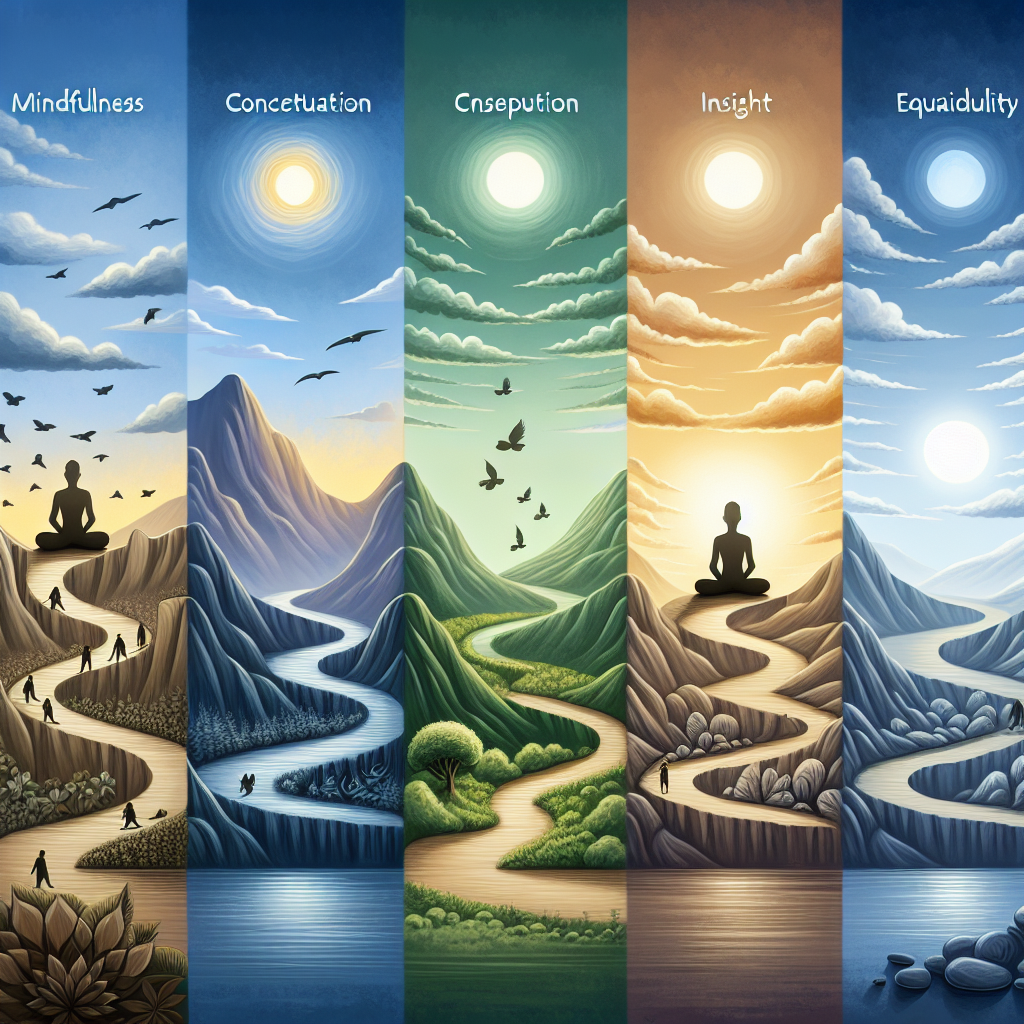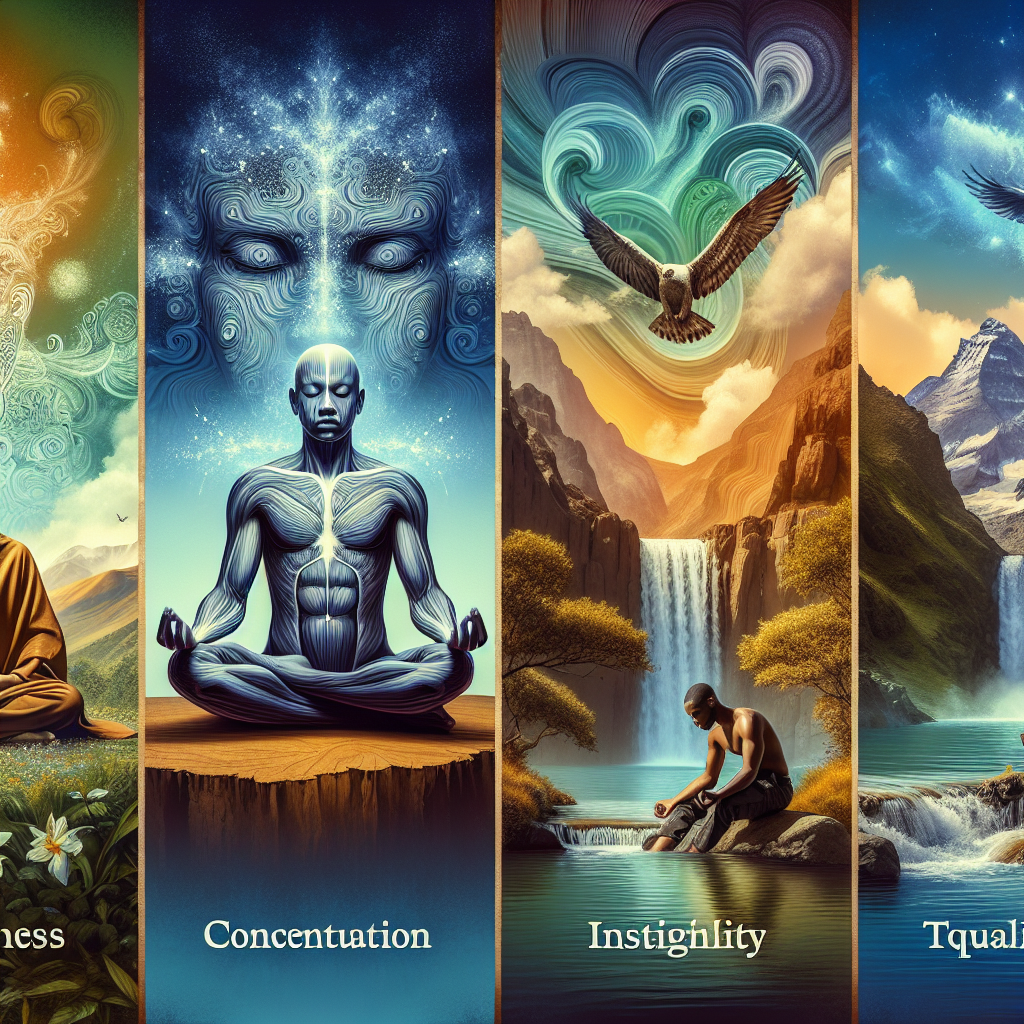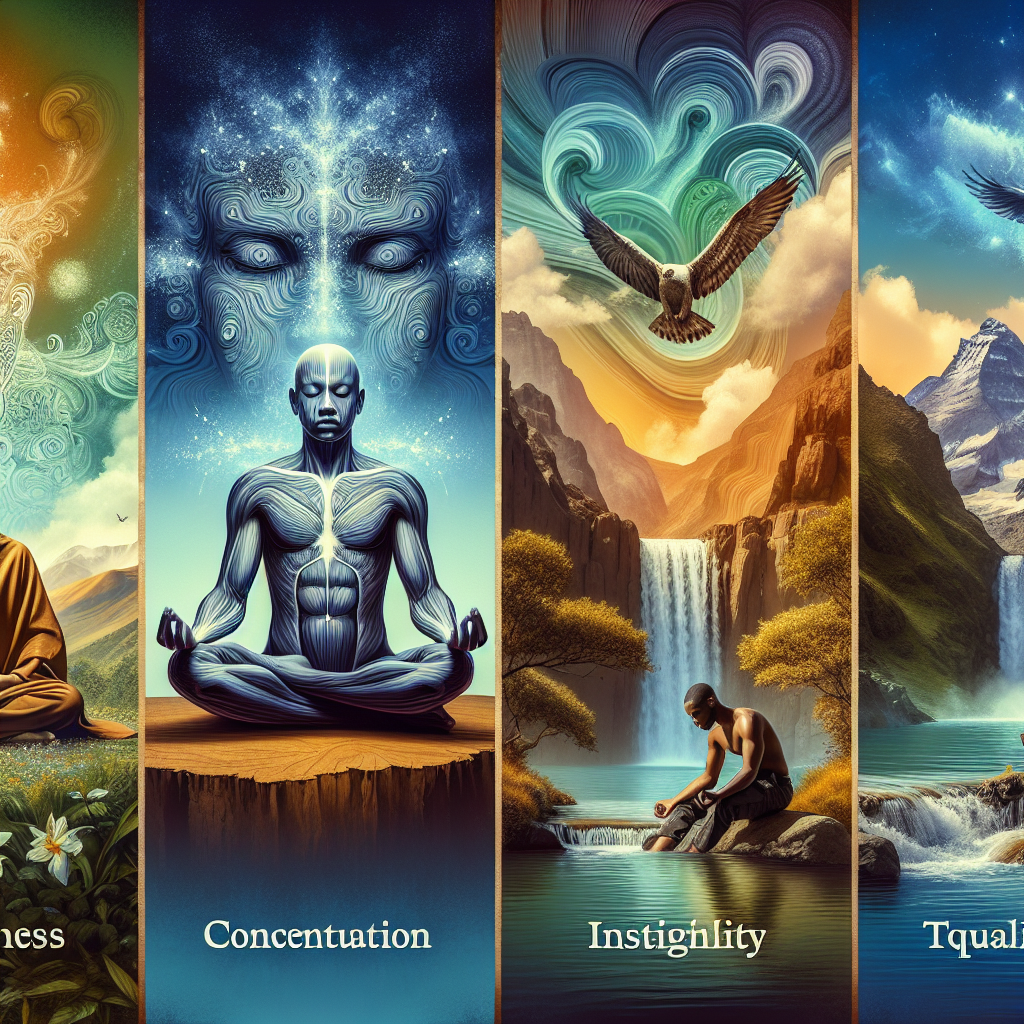Have you ever wondered what the 5 stages of meditation are? If you have, you’re in luck! In this article, we’ll explore the fascinating world of meditation and break down the five stages that practitioners often go through on their journey. From beginner to advanced, each stage offers its own unique experiences and benefits. So whether you’re a curious newbie or a seasoned meditator looking to deepen your practice, get ready to discover the incredible transformation that awaits you on the path of meditation.

Recognition and Stabilization
Awareness of the present moment
In the first stage of meditation, you begin by cultivating awareness of the present moment. This involves bringing your attention to what is happening right now, without getting caught up in thoughts about the past or future. By training yourself to be present, you can develop a deeper sense of clarity and focus.
Relaxation and grounding techniques
To enhance your meditation practice, it is essential to cultivate a sense of relaxation and groundedness. This can be achieved through various techniques such as deep breathing exercises, progressive muscle relaxation, or visualizations. By relaxing your body and mind, you create the optimal conditions for deepening your meditation experience.
Concentration on the breath
A key aspect of meditation is learning to concentrate your mind. In this stage, you focus your attention on the breath, using it as an anchor to bring your awareness back whenever your mind wanders. By training yourself to concentrate on the breath, you can develop greater mental clarity and stability.
Developing focus and stability
As you continue to practice meditation, you will find that your ability to focus and stabilize your mind improves. This stage involves honing your concentration skills and developing the ability to sustain your attention for longer periods. By cultivating focus and stability, you can deepen your meditation practice and experience greater states of calm and insight.
Building a solid foundation
The final step in the recognition and stabilization stage is building a solid foundation for your meditation practice. This involves establishing a consistent routine and creating a dedicated space for your practice. By setting aside time each day and creating a supportive environment, you can enhance your ability to enter deeper states of meditation and maintain a regular practice.
Detachment and Discernment
Observing thoughts and emotions without attachment
In the second stage of meditation, you learn to observe your thoughts and emotions without becoming attached to them. Rather than getting caught up in the content of your thoughts or becoming overwhelmed by your emotions, you cultivate a sense of detachment. By observing these mental and emotional phenomena without attachment, you can develop greater clarity and insight into the nature of your mind.
Cultivating a non-judgmental attitude
A non-judgmental attitude is a fundamental aspect of meditation. As you progress in this stage, you cultivate the ability to accept your thoughts and emotions without labeling them as good or bad. By approaching your experiences with a non-judgmental attitude, you can foster a sense of inner peace and compassion towards yourself and others.
Developing the ability to let go
Letting go is an important skill to cultivate in meditation. As you observe your thoughts and emotions, you learn to let go of the ones that no longer serve you. This involves releasing attachment to certain beliefs, desires, or patterns of thinking that may be causing suffering. By developing the ability to let go, you can experience a greater sense of inner freedom and liberation.
Recognizing the impermanence of all phenomena
In this stage, you deepen your understanding of the impermanence of all phenomena. Through your meditation practice, you come to realize that everything is constantly changing and transient. This insight can help you develop a sense of detachment from the ups and downs of life and cultivate a greater sense of equanimity.
Discerning between helpful and unhelpful thoughts
As you progress in your meditation practice, you become more skilled at discerning between helpful and unhelpful thoughts. This involves recognizing thoughts that are beneficial and supportive of your well-being, while learning to let go of thoughts that are unhelpful or harmful. By cultivating this discernment, you can develop a greater sense of mental clarity and make wiser choices in your life.

Deepening Insight
Exploring the nature of self
In the third stage of meditation, you delve into the nature of self. Through your practice, you begin to question the concept of a fixed and separate self. You realize that your sense of identity is not fixed but rather a constantly changing and interconnected phenomenon. This exploration of self can lead to a profound shift in how you perceive yourself and the world around you.
Investigating the causes of suffering
Another aspect of the deepening insight stage is investigating the causes of suffering. Through mindfulness and self-inquiry, you start to uncover the underlying causes of your own suffering and the suffering of others. This exploration can bring about a greater sense of compassion and a desire to alleviate suffering in yourself and the world.
Developing mindfulness in daily life
As you progress in your meditation practice, you begin to integrate mindfulness into your daily life. This involves bringing a sense of awareness and presence to your daily activities, whether it be eating, walking, or engaging in conversations. By cultivating mindfulness in daily life, you can experience a greater sense of joy and fulfillment in the present moment.
Examining the interconnectedness of all things
Deepening insight also involves recognizing the interconnectedness of all things. Through your meditation practice, you start to see how everything is interconnected and interdependent. This understanding can foster a sense of unity and compassion, as you recognize that your actions and choices have an impact on the world around you.
Cultivating compassion and loving-kindness
In this stage, you cultivate compassion and loving-kindness towards yourself and others. Through meditation practices such as loving-kindness meditation, you develop a genuine care and concern for the well-being of all beings. This cultivation of compassion can lead to greater happiness, inner peace, and a desire to contribute positively to the world.
Absorption and Transcendence
Entering deeper meditative states
In the fourth stage of meditation, you begin to enter deeper meditative states. These states are characterized by a sense of calm, peace, and heightened awareness. As you continue to practice and refine your meditation skills, you can access these states more easily and for longer durations. Deepening your meditation practice allows you to experience profound inner states of tranquility and insight.
Experiencing higher levels of consciousness
As you progress in your meditation practice, you may begin to experience higher levels of consciousness. These states can include a heightened sense of clarity, expanded awareness, and a deepening connection to your inner self and the world around you. Experiencing higher levels of consciousness can bring about a profound shift in your perception and understanding of reality.
Attaining a state of deep absorption and concentration
One of the goals of meditation is to attain a state of deep absorption and concentration known as Samadhi. In this state, your mind becomes completely focused and absorbed in the object of meditation. The distractions and fluctuations of the mind dissolve, and you experience a profound sense of stillness and oneness.
Transcending the limitations of the ego
Transcending the limitations of the ego is a transformative aspect of this stage. As you deepen your meditation practice, you may begin to transcend the narrow confines of the ego and experience a greater sense of interconnectedness and unity. This shift in consciousness can bring about a profound sense of liberation and freedom from the limitations of the self.
Connecting with universal consciousness
In this stage, you may experience a deep connection with universal consciousness. Through your meditation practice, you begin to realize that your individual consciousness is part of a greater whole. This realization can bring about a sense of profound interconnectedness and unity, as you recognize that you are not separate from the world but an integral part of it.
Integration and Application
Bringing meditation into daily life
The final stage of meditation is about bringing your practice into daily life. As you become more skilled in meditation, you learn to carry the qualities of mindfulness, compassion, and awareness into all aspects of your life. This means applying the lessons and insights gained from your meditation practice to your interactions, work, and everyday activities.
Applying mindfulness in challenging situations
Mindfulness can be particularly useful in challenging situations. In this stage, you learn to apply mindfulness to difficult emotions, conflicts, or stressful circumstances. By bringing a sense of presence and non-reactivity to these situations, you can cultivate greater resilience, clarity, and emotional well-being.
Using meditation as a tool for personal growth
Meditation is not just a practice for relaxation or stress reduction; it is also a powerful tool for personal growth and transformation. In this stage, you begin to see meditation as a means for self-discovery, healing, and personal development. By regularly engaging in meditation, you can cultivate greater self-awareness, self-compassion, and a deeper understanding of yourself and the world.
Creating a balanced and harmonious life
Through the integration of meditation in your daily life, you strive to create a balanced and harmonious life. This involves finding a healthy balance between work, relationships, self-care, and spiritual practice. By living in alignment with your values and priorities, you can create a life that is fulfilling, meaningful, and balanced.
Sharing the benefits of meditation with others
The final step in the integration and application stage is sharing the benefits of meditation with others. As you deepen your meditation practice, you may feel a desire to share the transformative power of meditation with those around you. This can be through teaching, guiding others in their meditation practice, or simply being a positive example of the benefits of meditation in your own life.
In conclusion, the 5 stages of meditation provide a comprehensive framework for cultivating mindfulness, insight, and transcendence. By recognizing and stabilizing your awareness, practicing detachment and discernment, deepening your insight, experiencing absorption and transcendence, and integrating and applying meditation in your daily life, you can unlock the profound benefits and transformative potential of this ancient practice. May your journey of meditation be filled with tranquility, wisdom, and inner peace.
